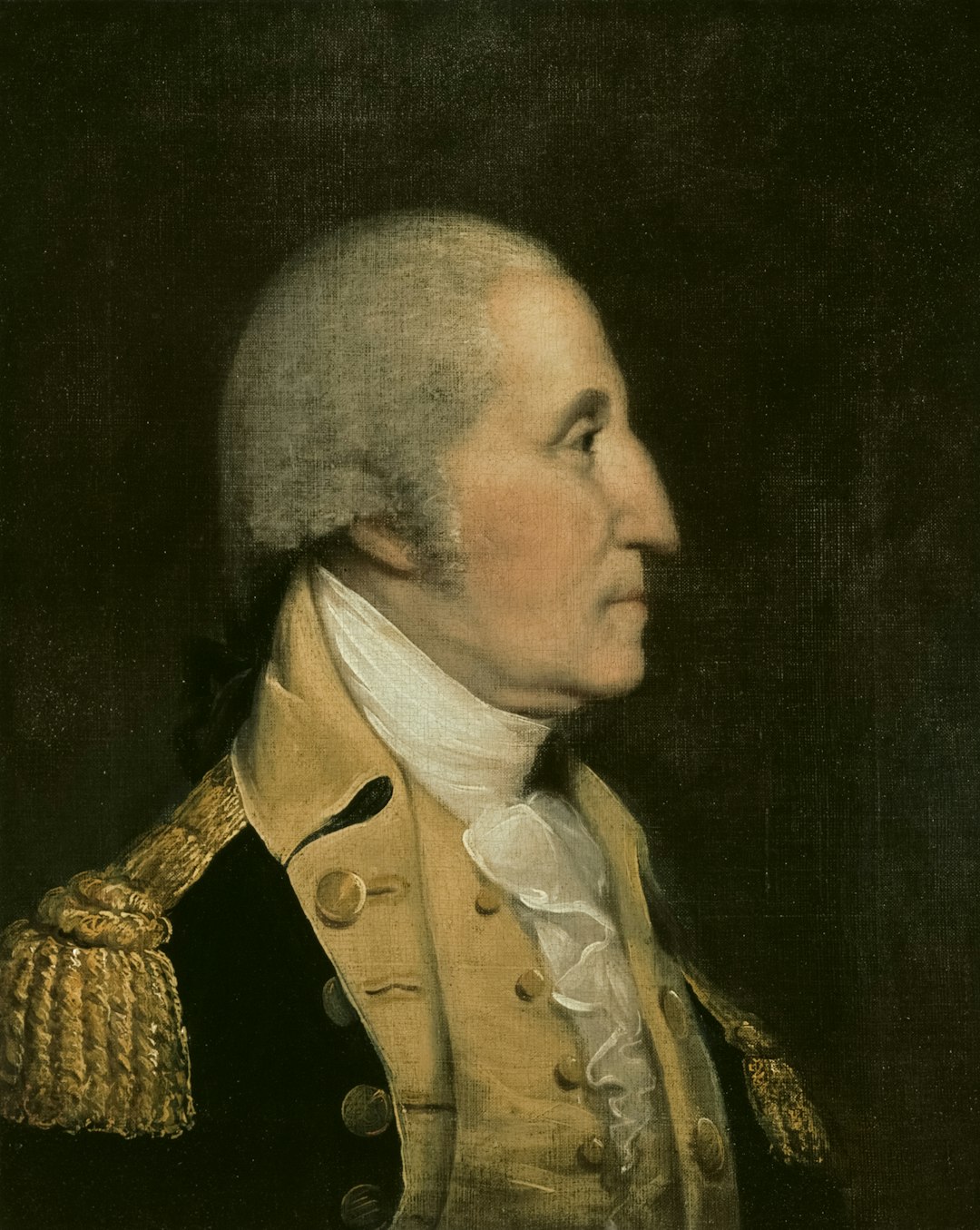George Washington Had Wooden Teeth

The image of America’s first president sporting a set of rough wooden chompers has become one of the most enduring myths in American history. Next to the Cherry Tree legend, the story that George Washington wore wooden dentures arguably remains the most widespread and enduring myth about Washington’s personal life. While Washington certainly suffered from dental problems and wore multiple sets of dentures composed of a variety of materials—including ivory, gold, lead, and human teeth—wood was never used in Washington’s dentures nor was it commonly employed by dentists in his era. Rather than wood, Washington’s many false choppers were made out of varying combinations of rare hippopotamus ivory, human teeth and metal fasteners. He got his first set before the Revolutionary War, and may have also undergone a “tooth transplantation” procedure—perhaps even using teeth purchased from his own slaves—in the mid-1780s with the help of his personal dentist and friend, Jean-Pierre Le Mayeur. The myth likely persists because the teeth would easily turn brown without regular care and cleaning, and their occasionally unsightly appearance may have first jumpstarted the rumor that they were made from wood. The reality was far more disturbing than wood ever could be—Washington’s dentures included teeth from other human beings, quite possibly his enslaved workers.
Columbus Proved the Earth Was Round

Every American schoolchild has heard the tale of brave Christopher Columbus defying superstitious medieval minds who believed the Earth was flat. But this narrative is complete fiction that historians have been debunking for over a century. If he did, he was about 2,000 years too late. Ancient Greek mathematicians had already proven that the Earth was round, not flat. And by the third century B.C.E., Eratosthenes determined the Earth’s shape and circumference using basic geometry. In reality there were no sceptics, as educated people throughout Europe knew the earth’s spherical shape and its approximate circumference. Rather, it was invented in 1828, when Washington Irving published The Life and Voyages of Christopher Columbus. Irving, a master storyteller, was already famous for tales like “Rip Van Winkle” and “The Legend of Sleepy Hollow” when he tackled the life of Columbus. The real issue Columbus faced wasn’t about the Earth’s shape but its size—critics correctly argued that ships couldn’t carry enough supplies for such a massive journey.
Everyone in America Is Wealthy or Getting Rich

The American Dream mythology suggests that prosperity is within everyone’s reach, but the stark reality paints a dramatically different picture. In the first quarter of 2024, almost two-thirds percent of the total wealth in the United States was owned by the top 10 percent of earners. In comparison, the lowest 50 percent of earners only owned 2.5 percent of the total wealth. According to a report from Moody’s Analytics in February, the richest 10 percent of Americans (households with an annual income of at least $250,000) drove half of all US consumer spending (about $10 trillion) between September 2023 and September 2024. The fact that 12.7 million households could collectively outspend much of the rest of the nation is truly jaw-dropping. Carter C Price and Kathryn Edwards authored a RAND Corporation working paper in 2020, estimating that between 1975 and 2018, tax cuts and social welfare austerity had led to a nearly $50 trillion transfer of wealth from the bottom 90 percent of Americans to the top 10 percent in wealth. Worse still, this transference had accelerated in the 2010s to an average of $2.5 trillion annually—all before the COVID-19 pandemic. The myth of universal American prosperity crumbles when faced with these devastating statistics.
Americans Only Use 10 Percent of Their Brains

This persistent myth has spawned countless movies, self-help books, and motivational speakers claiming we could unlock superhuman abilities if only we used our “full brain power.” Many people believe that humans only use 10 percent of their brains; it’s even the plot line for the 2014 film Lucy, starring Scarlett Johansson. However, that’s nothing but a myth, neurologist Barry Gordon told Scientific American. He says that humans “use virtually every part of the brain” and most of the brain is “active almost all the time.” This is a motivational speaker’s ploy (that can be traced back to the early 1900s) to encourage people to live up to their full potential. Studies of brain activity have provided no evidence that only 10% of the brain is used. Modern brain imaging technology shows that even simple tasks activate multiple brain regions simultaneously. The truth is that humans use virtually all of their brain, even during sleep, making this one of the most scientifically absurd myths still floating around American culture.
The Great Wall of China Is Visible from Space

This supposed “fact” gets repeated so often that it seems absolutely true, but it’s actually one of the most persistent geographical myths Americans believe. The Great Wall of China gets a double whammy on this myth. It’s also pretty hard to pick out the Great Wall of China from any space-based locale. In low-Earth orbit, it’s next to impossible to see it with the naked eye. Even with a fairly hefty camera lens, it’s still challenging to tell if you’re looking at the Great Wall or not. There are a couple of reasons this pseudo-fact is so far-flung. For one, its history dates back to well before the Space Age, so no one knew enough to nip it in the bud straight off. Being hundreds of miles long, it’s understandable people would assume it sticks out like a sore thumb from space. The reality is that you can see many human-made structures from space, especially at night when they’re illuminated, but the Great Wall isn’t one of them. NASA has definitively debunked this myth, yet it continues to persist in classrooms and casual conversations across America.
Goldfish Have Three-Second Memory Spans

Pet stores and parents have been spreading this convenient lie for decades, probably to make people feel better about keeping goldfish in tiny bowls. Goldfish have a reputation of having bad memories. But it turns out that the idea that these orange aquatic creatures can only remember things for three seconds is a myth. Not only has this false fact been debunked by several studies throughout the years—some research even indicates goldfish could have a memory span of up to five months long. Scientists have trained goldfish to navigate mazes, respond to different colors and shapes, and even perform tricks on command. These behaviors would be impossible if goldfish truly forgot everything every three seconds. The myth probably persists because it makes people feel less guilty about keeping intelligent creatures in inadequate living conditions. In reality, goldfish are much smarter and more aware than we give them credit for, making their treatment in many American homes pretty troubling when you think about it.
Lightning Never Strikes the Same Place Twice

This old saying gets trotted out whenever someone wants to talk about rare or unlikely events, but it’s completely wrong from a scientific standpoint. You’ve probably heard someone say that “lightning never strikes twice,” but while this old adage is still used today, it’s not true—at least not scientifically. NASA debunked this myth in 2003, reporting that “lightning definitely strikes more than one place.” In fact, it does so about a third of the time! Tall structures like the Empire State Building and radio towers get struck by lightning multiple times every year because they’re the highest points around. Lightning follows the path of least resistance to the ground, which means certain locations are actually lightning magnets. The myth probably exists because people want to believe that surviving a lightning strike means you’re safe from future strikes, but the opposite is often true. If you’ve been struck once, you’re probably in a location or situation that makes future strikes more likely.
Bulls Are Enraged by the Color Red

Every cartoon and movie depicting Spanish bullfighting shows the matador waving a red cape to infuriate the charging bull, but this visual representation is based on a complete misunderstanding of bull biology. If you’ve ever seen a bullfight, you know how angry a bull gets when he sees a matador waving a red cape. But contrary to common belief, a bull doesn’t go into attack mode because he hates the color red. Instead, he’s triggered by both the movement of the cape and the presence of the bullfighter invading his personal space. Bulls can’t actually see red because they’re partially color blind and are only able to make out yellowish-green and bluish-purple shades. The red colour of the capes used by the matador in bullfighting is just tradition and is not the reason for the bull’s aggravation. What causes the bulls to charge is actually the movement of the cape, not the colour. The bulls used are also bred to be aggressive, particularly when they’re kept in an enclosed place. The red color is purely for dramatic effect and tradition—bulls would charge just as aggressively at a bright blue or green cape waving in their faces.
You Lose Most Body Heat Through Your Head

Parents across America have been bundling up their kids’ heads for generations based on this supposed medical fact, but it’s actually a complete misunderstanding of how heat loss works. If you look at the surface area, the head is no bigger than the rest of your body. It’s maybe about 10-15% of the total surface area, and that’s the percentage of body heat lost through the head. The myth probably started because military studies showed soldiers losing significant heat through their heads, but those studies were conducted on fully clothed soldiers wearing winter gear everywhere except their heads. Of course they lost more heat through the only exposed part of their bodies! The head doesn’t have any special heat-losing properties compared to other parts of your body. You lose heat proportionally to whatever body parts are exposed to cold air. So while wearing a hat in winter is still a good idea, it’s not because your head is some kind of magical heat-escape portal.
Americans Have Only Five Senses

Elementary school science classes across the country teach kids about the “five senses”—sight, hearing, taste, smell, and touch—but this oversimplified lesson creates a myth that follows people into adulthood. Many of us were taught that humans have five senses: touch, taste, smell, sight, and hearing. But those are only the five basic senses. While this concept of the “five” senses originated with Aristotle, many scientists argue that humans actually have between 14 and 20 senses. We have a sense of balance that tells us when we’re upright or falling, a sense of body position that lets us touch our nose with our eyes closed, temperature sensors that work independently of touch, and internal sensors that monitor things like blood pressure and hunger. There’s also our sense of time passing, pain receptors that are distinct from touch, and the ability to sense magnetic fields that some researchers believe humans possess. The “five senses” model is a convenient teaching tool, but it dramatically underestimates the complexity of human sensory experience and perception.
Looking at these myths, it’s fascinating how stories that started as simple misunderstandings or deliberate fiction have become “facts” that millions of Americans accept without question. From Washington’s supposed wooden teeth to Columbus’s imaginary flat-earth battle, these myths reveal more about what we want to believe than what actually happened. What’s your favorite myth that you just discovered was completely wrong?



